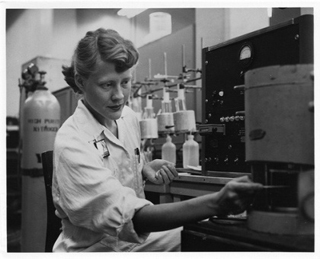Course Description
This seminar examines the history and legacy of the Cold War on American science. It explores scientist’s new political roles after World War II, ranging from elite policy makers in the nuclear age to victims of domestic anti Communism. It also examines the changing institutions in which the physical sciences and …
This seminar examines the history and legacy of the Cold War on American science. It explores scientist’s new political roles after World War II, ranging from elite policy makers in the nuclear age to victims of domestic anti Communism. It also examines the changing institutions in which the physical sciences and social sciences were conducted during the postwar decades, investigating possible epistemic effects on forms of knowledge. The subject closes by considering the place of science in the post-Cold War era.
Course Info
Instructor
Departments
Learning Resource Types
assignment
Written Assignments

This 1961 photograph was used to illustrate a news story about “sex desegregation” in science and the importance of encouraging more women to become scientists if the United States was to compete effectively in the Cold War. The accompanying caption reads: “Mrs. Carl Gibson who as Jane Blankenship won high science honors in school, combines her scientific work with advanced studies and homemaking.” As a student at Oak Ridge High School, Blankenship won a number of honors. While completing a B.S. in chemistry at the University of Tennessee, she worked during the summers at Oak Ridge National Laboratory, where her father was a physical chemist. By 1961, she had married a chemical engineer, moved to California, and was working as a spectroscopist for Lockheed aircraft. (Image courtesy of the Smithsonian Institution.)








